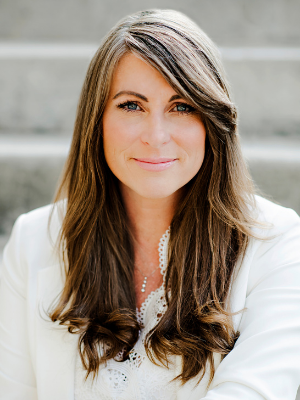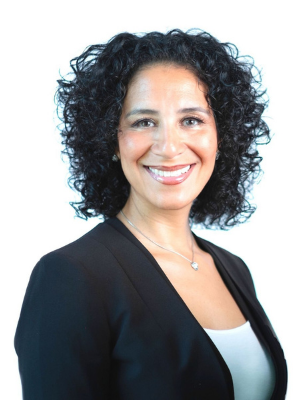 Learning and development (L&D) is an industry where women are considered to thrive, but that reputation is shockingly more substantiated by the abundant representation of women entering the field than the slimmer percentages in leadership roles.
Learning and development (L&D) is an industry where women are considered to thrive, but that reputation is shockingly more substantiated by the abundant representation of women entering the field than the slimmer percentages in leadership roles.
As leveraging L&D expertise becomes more critical to propelling women into senior roles amidst reskilling/upskilling demands across industries, can the L&D field address its own gender ratio flip at the leadership level?
Female-inclined Field, Same Leadership Gender Gaps
By the disproportionate numbers entering into the field, women are clearly drawn to leading on education. A recent survey showed that both education and human resources were among the top five areas for job satisfaction for women. Gallup research has previously found that women slightly outrank men on accepting and empathizing with others as well as being able to recognize and develop people’s potential, natural matches for the L&D field.
Training Industry research has also shown that women in traditionally “female” fields (such as L&D) are more likely to have access to training in strategy and negotiation, key leadership skills, relative to fields like tech or government—which makes what happens at the leadership level more astounding.
L&D is often housed in human resources, where women comprise over 70% of managers, but that’s an inaccurate reflection of L&D senior leadership composition.
As called out by #womeninlearning, a movement began by Sharon Claffey Kaliouby and co-founded with Kate Graham to amplify the voices of women in the L&D sector, research by Donald H Taylor revealed that the more senior you go in the US and UK, the more absent women are in L&D roles.
While support and entry level positions were 67% female and 33% male, this ratio flips entirely at the senior level—where leadership positions are 69% male and 31% female.
The gender advantage toward women already dissipates at mid-authority roles (51% male, 49% female) and practitioner roles (53% male, 47% female), where the split is equal but men become overrepresented versus entry level numbers.
Additionally, Namely found that women entering human resources made nearly 11% less than male counterparts, the gap widening around age 45. In organizational and industrial psychology, the gap was 17.7%. A salary and compensation report from the eLearning Guild in 2018 found that women beginning e-learning roles in their 20s start with a 6% pay gap, which increases to 20 percent at 60+ years. Men also received double the average bonus given to women, .5% higher raises, and 16% more average total compensation, despite women in the sample having higher education levels.
One survey of L&D professionals by Training Journal showed that one in four respondents felt outright discriminated against because of gender, many feeling penalized for being a working mother. Greater were the race disparities. Chief Learning Officer data has shown that only 9% of learning managers are Latino, 5.6% are black, and 2.2% are Asian.
Looking to L&D To Advance Women Across the Board
While the L&D industry’s reputation as a women-oriented field conceals its own perplexing gender leadership gap, the industry is itself being heralded to lead the way on recovering lost ground on gender equality and making advances.
Amidst the vast and disproportional hit that Covid-19 pandemic response measures have had on displacing and exasperating disadvantage for women in the workforce, online learning is being championed as a primary ally in returning opportunity to and empowering women in professional roles.
“It is only when they have access to quality information and ways to decipher it that women can march ahead towards leadership roles in organisations,” writes Dr. S.K Nigam in HERSTORY. “And sectors like Corporate Learning and Development have a huge role to play in this.”
Training Zone in the UK observed that from the beginning of the first lockdown in March 2020, “the number of women enrolling in online courses tripled, with a 250% year-on-year increase in female enrollments across our business and management courses.”
Training Zone also found that since the pandemic, 75% of US employers are more likely to hire people with online education.
In addition to “seeing more women taking the initiative in using online learning to combat the impacts of the pandemic on their careers,” the organization emphasize that organizations need to assume this responsibility too.
A D2L survey reported an awareness gap around training resources: only 48 percent of women reported having access to online learning platforms at their company. But according to Nigam, an international survey indicated that among a sample of 300 companies, 59% reported they ran women-specific learning and development programs, the number going up to 79% among large enterprises.
Upskilling/Reskilling Demands are Elevating L&D’s Profile
Writing in Chief Learning Officer, Amy Borsetti, senior director at LinkedIn Learning Solutions, points to the LinkedIn Learning’s “2021 Workplace Learning Report” to affirm that “L&D is well-positioned to have a long-term, elevated role within organizations today, from promoting internal mobility to actively creating a more inclusive and equitable workforce.”
“One thing this year has made clear is that skills are the new currency in the workplace,” write Borsetti, later continuing, “From an organizational standpoint, creating a culture of continuous learning is a competitive advantage. Those organizations that seize the moment, and get this right, have a higher likelihood to outpace their competitors. It’s not just about learning itself — it’s about the outcomes.”
Whereas being seated in HR has arguably distanced L&D from the core business value and strategy discussions, Borsetti argues that the C-Suite has never been more actively engaged than it is right now. The LinkedIn Learning report found that over half of the 1,260 L&D professionals surveyed felt that L&D is evolving in prioritization from a “nice to have” to a “need to have.” And 63% of L&D professionals reported having a seat at the C-Suite table, a 27% lift within one year.
As Borsetti puts it in Chief Learning Officer, “The reality is, the shelf life of learning programs is shortening at the same or faster clip than the shelf life of jobs.”
The acceleration of pandemic response-correlated disruption, such as displacement and job creation from automation and the more autonomous work-from-home office, has made ongoing reskilling/upskilling both individual and organizational agendas. Meanwhile, attaining microcredentials and refining essential soft skills are on the rise too.
The report found upskilling/reskilling were the top priorities for L&D professionals in 2021, especially internal mobility: “The conditions have never been more right to prioritize skill development as the new corporate currency, level the playing field, create a more equitable workplace and achieve business results that wouldn’t be possible otherwise,” notes Borsetti.
But the question is not only what is needed, but how it should be done. What is garnering attention is exactly how L&D structure, content and approaches evolve to meet the current context in which education must engage, much of which was not considered amidst the whiplash reactivity to online education brought on by the pandemic.
Dr. Rumeet Billan, Chief Learning Architect at Viewpoint Leadership Inc, observes: “We continued to perpetuate our traditional understanding of what L&D is supposed to look like, instead of what learning is supposed to feel like.”
L&D professionals are speaking to how learning is evolving towards being more accessible and customized, self-driven and on-demand, context-relevant, bite-sized, blended, flexible, on-going and more akin in interaction to everyday work activities.
“Transformative learning is an art. Designing a training session is choreography – it’s a sequence that makes the learner reflect, feel, and draw connections that are applicable and practical to them. It’s an experience,” says Billan, who also adds: “The future of learning should look and feel different. We should be intentionally redefining the traditional notion of L&D, how we design and deliver content, and how a learner experiences training and development.”
Can L&D Lead its own Gender Equality Change?
“…I do believe what we’re doing here is opening people’s eyes. Once you see the imbalance, it becomes almost impossible to unsee it,” notes Kate Graham, co-founder of #womeninlearning. “Just look at the speaker line-up of any conference and you can instantly see if that organisation is paying any heed to gender balance and the voices of women.”
So as L&D rises in position in the C-Suite’s vision agenda and increasingly focuses on the learner experience to shape the design and delivery of learning, what kind of experience will be created for the women aspiring to rise to leadership in this very field?
By: Aimee Hansen







